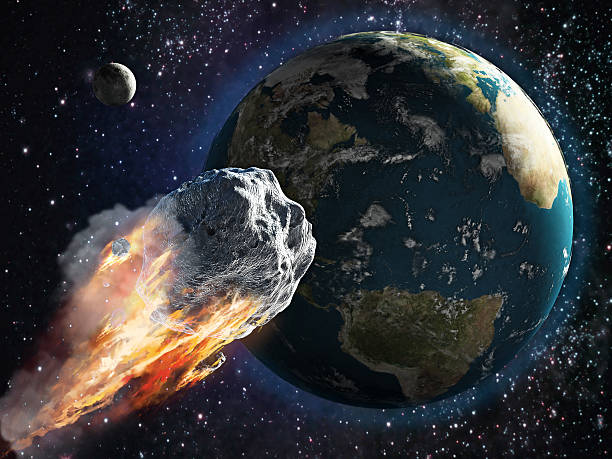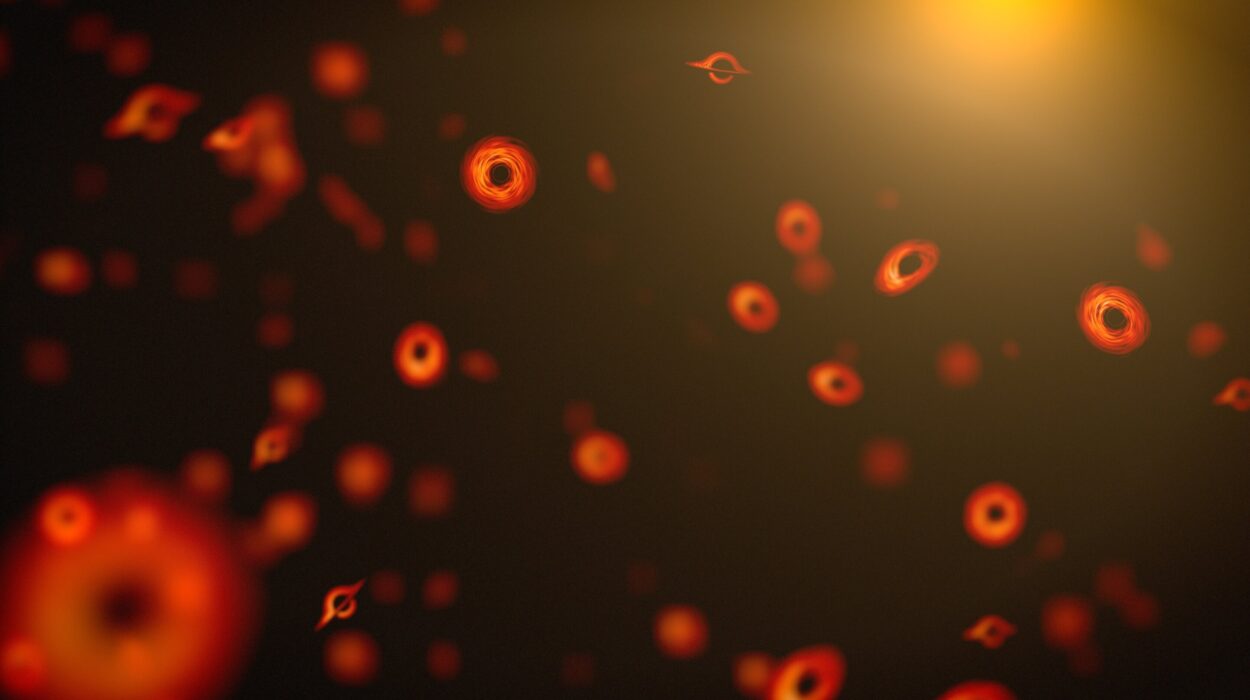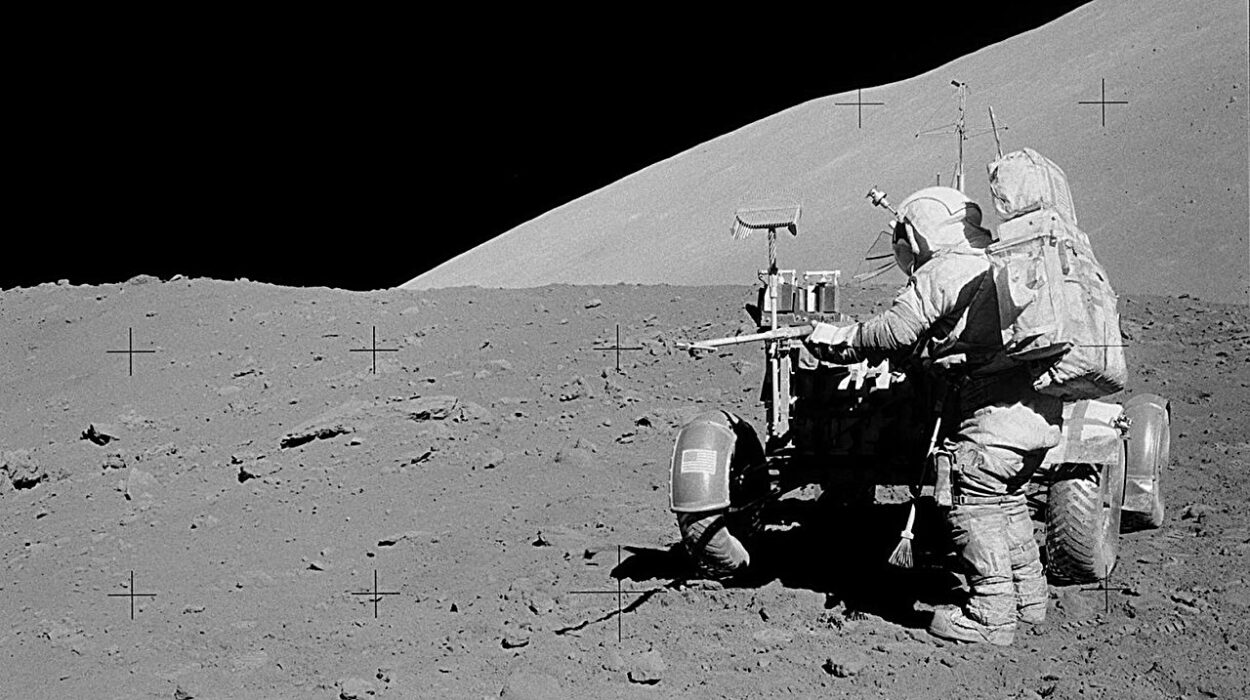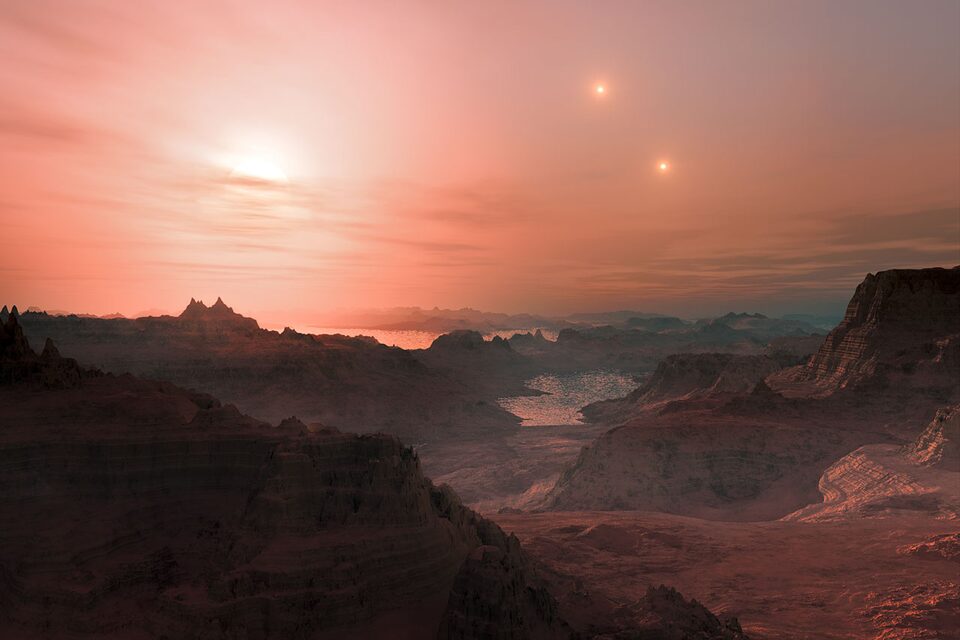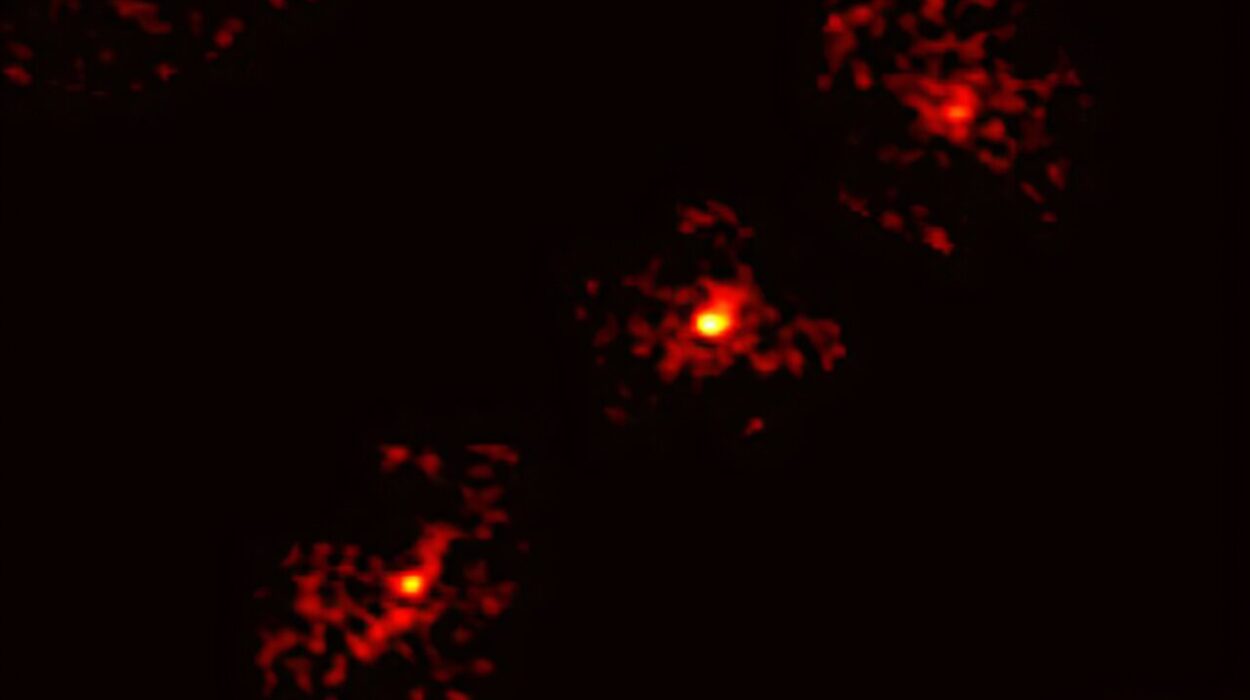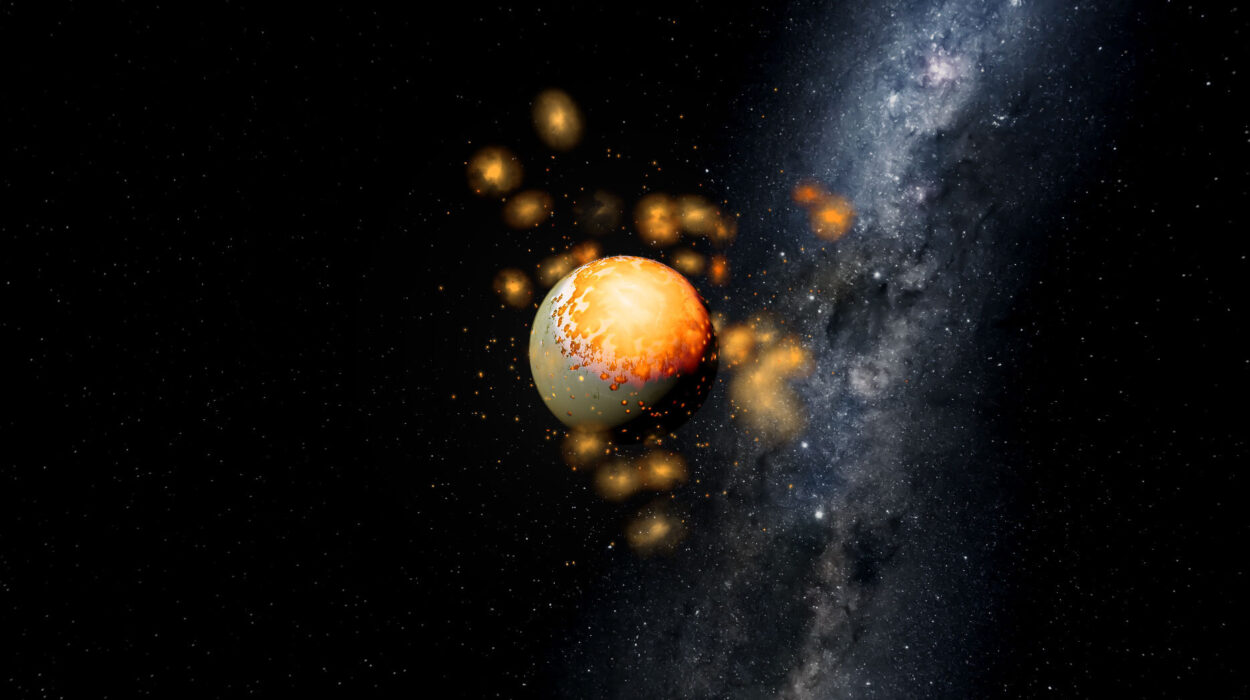Out in the silent, ancient void 2.8 billion light-years from Earth, two colossal structures—each containing hundreds of galaxies, immense reservoirs of superheated gas, and vast clouds of invisible dark matter—are locked in an epic gravitational dance. These behemoths are galaxy clusters, the largest structures in the universe bound by gravity. And they’re not just passing by one another.
They are colliding.
A recent set of extraordinary observations from NASA’s Chandra X-ray Observatory, ESA’s XMM-Newton, the Netherlands-based LOw Frequency ARray (LOFAR), and optical images from Pan-STARRS have captured this cosmic cataclysm in unprecedented detail. The galaxy cluster in focus—PSZ2 G181.06+48.47, or PSZ2 G181 for short—has not only experienced a dramatic, head-on collision about a billion years ago, but it is now turning around for an encore. Astronomers believe the two clusters that first crashed together are now reversing course and will soon collide once more in a slow-motion, billion-year-long rematch.
What Is a Galaxy Cluster—and Why Does It Matter?
A galaxy cluster is not just a collection of galaxies—it is a vast, gravitationally bound ecosystem. A single cluster might contain thousands of galaxies, each with billions of stars. Between these galaxies lies an ocean of superheated gas so hot it glows in X-rays, and surrounding it all is a halo of dark matter, the mysterious, invisible substance that makes up the majority of the cluster’s mass.
Studying galaxy clusters is like studying the spine of the universe. They reside at the nodes of the cosmic web, where filaments of matter thread together galaxies across space. Collisions between clusters are among the most energetic events since the Big Bang—massive enough to jolt gas, warp spacetime, and ignite shock waves that ripple across millions of light-years.
Shock Waves That Span the Universe
PSZ2 G181 is a particularly intriguing cosmic drama. About a billion years ago, two galaxy clusters plowed into one another. The energy released in this initial impact sent shock fronts—akin to the sonic booms generated when jets break the sound barrier—rippling outward through space. These shock fronts are now visible in new observations and stretch across an astonishing 11 million light-years.
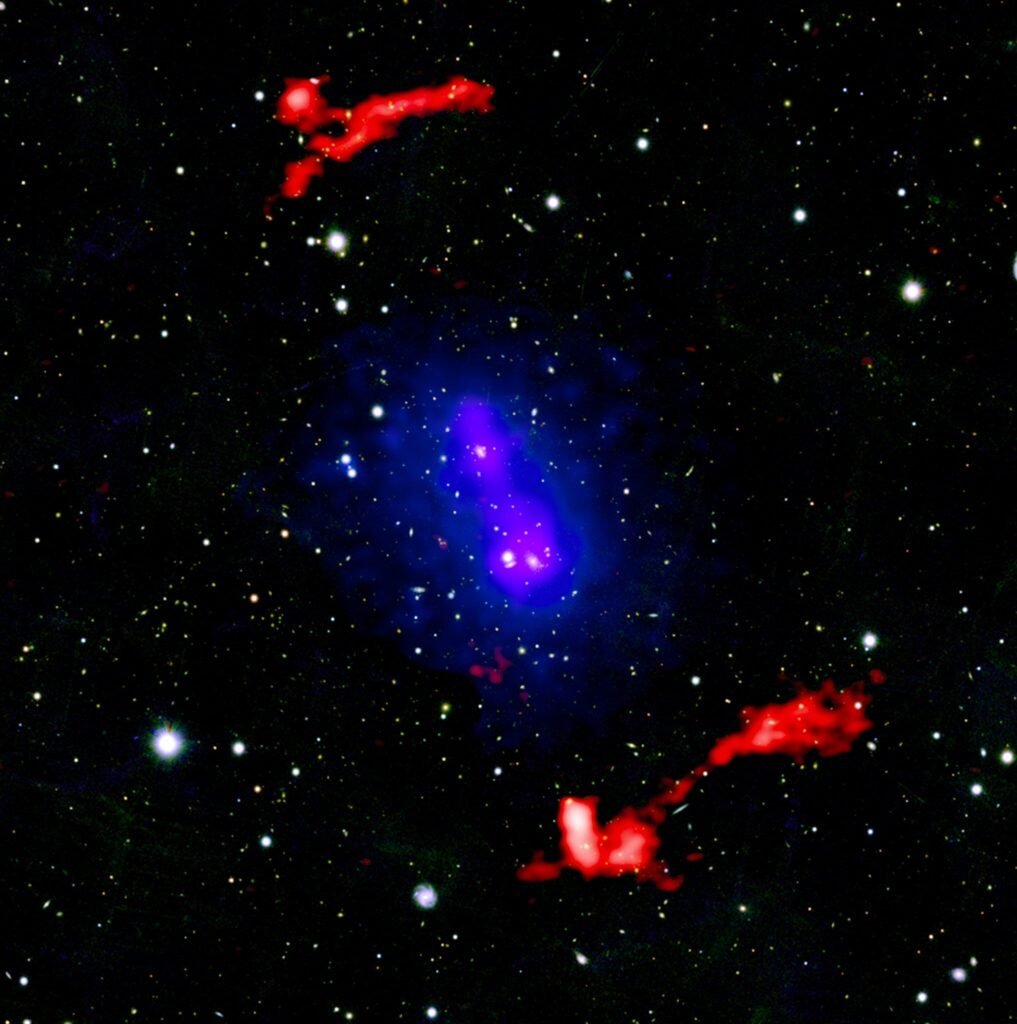
For perspective, that’s more than 100 times the diameter of our own Milky Way galaxy. These shock structures are the largest ever observed of their kind. Detected by LOFAR as faint, red, parentheses-shaped arcs on opposite sides of the cluster, they suggest that gas from the original collision is still moving outward in slow, dramatic waves.
Seeing the Unseeable: A Multiwavelength Marvel
To unlock this story, astronomers relied on a rich symphony of observatories, each contributing a unique perspective. LOFAR, which operates at extremely low radio frequencies, excels at detecting diffuse, extended features like these ancient shock fronts. Its detection of the curved, red arcs hinted at massive, ongoing turbulence in the gas.
But it was Chandra’s X-ray vision that brought new clarity. Using its sharp gaze, researchers detected hot, X-ray emitting gas flowing along the same axes as the radio shocks. Together with ESA’s XMM-Newton, Chandra revealed three distinct shock fronts—each acting as an invisible footprint of cosmic violence.
Layered with optical data from Pan-STARRS, which provided the backdrop of visible stars and galaxies, these images compose a rare, composite view of the collision: radio (red), X-rays (blue and purple), and starlight (white and yellow) all stitched together into a portrait of celestial turmoil.
A Rare Second Collision Is Brewing
What makes PSZ2 G181 exceptional isn’t just its size—it’s the fact that it may be heading for a second collision. While many galaxy clusters pass through each other once and then drift apart, these two clusters seem to be gravitationally bound, like dancers caught in a spiraling waltz.
After the first smash-up, their combined gravity slowed the clusters down, pulling them back together. Now, evidence from Chandra and XMM-Newton suggests they’ve reversed course and are inching closer for a second head-on impact.
This kind of “slingshot” event is exceedingly rare. It’s akin to throwing two icebergs into each other in slow motion across a vast ocean, watching them bounce, drift, and then come crashing back again centuries later. The cosmic timescale stretches so long that even observing the prelude to such a second collision is a scientific windfall.
Unraveling a Lighter-Weight Battle
Another unexpected twist in this cosmic tale lies in the size of the clusters themselves. Galaxy cluster collisions typically involve massive players—titanic systems with quadrillions of times the mass of our Sun. But PSZ2 G181 seems to be a lightweight contender by comparison.
Preliminary calculations suggest that the total mass of the system is lower than other known colliding clusters, making this event a rare example of low-mass galaxy clusters colliding not just once, but potentially twice. That adds a crucial piece to the cosmic puzzle. It suggests that cluster mergers—often thought to be the domain of the most massive systems—can also happen at smaller scales, possibly more frequently than we assumed.
Understanding the dynamics of such lighter collisions may provide new insight into dark matter behavior, gas physics, and the formation of cosmic structures.
The Hunt for Dark Matter’s Fingerprints
Perhaps one of the most tantalizing aspects of observing galaxy cluster collisions is their potential to reveal the secrets of dark matter. When clusters collide, their galaxies, gas, and dark matter respond differently. While the galaxies mostly pass through each other like ghosts, the gas clouds slam together and heat up, creating the X-ray glow. Dark matter, being invisible and seemingly non-interacting, behaves more mysteriously.
By mapping the locations of the gas, galaxies, and gravitational lensing effects (distortions of light due to mass), astronomers can infer where the dark matter is. Previous cluster collisions, like the famous Bullet Cluster, have provided some of the most compelling evidence for the existence of dark matter.
If PSZ2 G181 does go through a second collision, it could offer a second chance to watch dark matter behave under extreme conditions, effectively doubling the opportunity to refine our models of the invisible scaffolding of the universe.
Three Windows into the Same Collision
The findings come from a coordinated trio of studies published in The Astrophysical Journal. The lead paper is helmed by Dr. Andra Stroe from the Center for Astrophysics | Harvard & Smithsonian (CfA). It focuses on the X-ray structures and the broader dynamics of the collision.
The second study, led by Kamlesh Rajpurohit (also at CfA), dives into the radio emissions—those relic shock fronts imprinted by ancient violence. The third, by Eunmo Ahn from Yonsei University in South Korea, examines the galaxy distributions and velocities, building a 3D view of how the clusters are moving.
Together, these papers paint a comprehensive picture of one of the rarest events in astrophysics. They offer a moment of clarity in a process that plays out over billions of years—allowing us to witness, in real time, the gears of the universe slowly grinding through their titanic motions.
Cosmic Implications: Why This Collision Matters
At first glance, the collision of two galaxy clusters may seem like an abstract event, far removed from human experience. But in truth, it is central to understanding the structure and fate of the universe.
Cluster collisions are cosmic laboratories. They allow us to study fundamental physics under extreme conditions—gravity, dark matter, plasma turbulence, and the acceleration of high-energy particles. The very shock waves observed in PSZ2 G181 are believed to act as cosmic particle accelerators, similar in concept to the Large Hadron Collider on Earth, but on a much grander scale.
These processes may be responsible for seeding the universe with magnetic fields, generating cosmic rays, and shaping the distribution of galaxies across the sky. And because galaxy clusters are tied to the web of dark matter and cosmic expansion, understanding their collisions feeds directly into our understanding of cosmology—how the universe formed, evolved, and where it’s headed.
A Glimpse into the Universe’s Slowest Storm
In the end, PSZ2 G181 offers a sobering reminder of the vastness of time and space. A billion years have passed since its first great collision. Another billion may pass before the second is complete. Yet from our tiny perch on a rocky planet orbiting a nondescript star, we are watching this drama unfold.
It is a collision with no sound, a storm without rain—only light, and gravity, and invisible tides of energy that ripple across eternity.
Thanks to Chandra, LOFAR, XMM-Newton, and the brilliant minds who stitch together the whispers of photons across the spectrum, we are beginning to see the universe not as static, but as living, dynamic, and in flux.
Galaxy clusters collide. Shock waves bloom. Dark matter dances in the void. And somewhere, a species of curious primates watches and wonders.
References: Andra Stroe et al, PSZ2 G181.06+48.47. I. X-Ray Exploration of a Low-mass Cluster with Exceptionally Distant Radio Relics, The Astrophysical Journal (2025). DOI: 10.3847/1538-4357/adb731
Kamlesh Rajpurohit et al, PSZ2 G181.06+48.47. II. Radio Analysis of a Low-mass Cluster with Exceptionally Distant Radio Relics, The Astrophysical Journal (2025). DOI: 10.3847/1538-4357/adbbb9
Eunmo Ahn et al, PSZ2 G181.06+48.47. III. Weak-lensing Analysis and Merging Scenario Reconstruction of a Low-mass Cluster with Exceptionally Distant Radio Relics, The Astrophysical Journal (2025). DOI: 10.3847/1538-4357/adbc99

